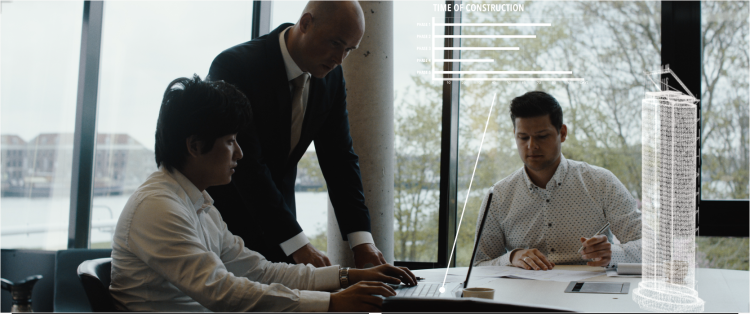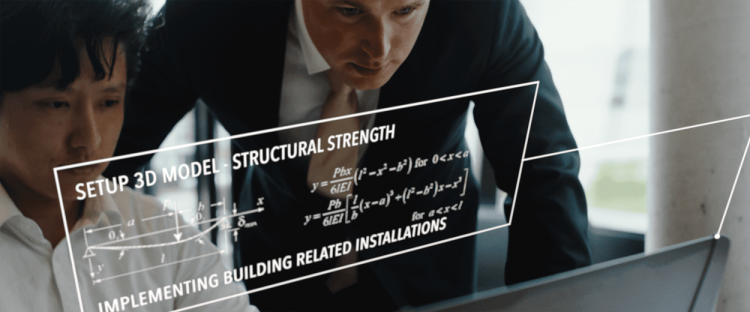



Building Information Modeling (BIM) has been transforming the construction industry in recent years, enabling professionals to collaborate on digital models of buildings and infrastructure throughout their life cycle. The application of BIM has evolved, leading to the introduction of different dimensions of BIM (D's), each representing a different aspect of the construction process. In this blog post, we will focus on the definitions of 8D, 9D, and 10D BIM and explore how they are being used in the industry today. The post outlines the basic information. For more detailed information about one of the 8D, 9D, or 10D dimensions visit the respective blogpost.
Looking for information about 3D to 7D BIM? Read more about the dimensions of BIM.
As the construction industry is constantly evolving, so is the terminology used within it. The development of Building Information Modelling has provided the industry with new opportunities to improve efficiency, communication, and collaboration. However, with the growing use of BIM, the interpretation of its applications has also diversified. One such example is the different interpretations of the dimensions of BIM, specifically 8D, 9D, and 10D BIM. There are multiple interpretations of these dimensions, and each has its own merits and use cases. In this section, we will explore these different interpretations and discuss the arguments for the most widely accepted definitions of 8D, 9D, and 10D BIM.
|
Dimension |
Interpretation of The BIM Engineers / Global accepted. |
Interpretation 2 |
Interpretation 3 |
Interpretation 4 |
|
8D BIM |
Safety during design and construction |
Design quality assurance |
Facility management |
Integration of sustainability |
|
9D BIM |
Lean construction |
Project management |
Cost estimating |
Construction simulation |
|
10D BIM |
Construction industrialisation |
Supply chain management |
Lifecycle management |
Digital twin |

Consistency with existing industry standards: The BIM Engineers interpretation aligns with existing industry standards such as ISO 19650 which defines Level of Development (LOD) for BIM models up to LOD 500. The levels 8D, 9D, and 10D are not defined in any industry standards, which supports the idea that they are not widely recognized as standard BIM dimensions.
Clarity of definition: The interpretation is straightforward and easily understood. It defines BIM dimensions based on specific areas of construction, such as safety, lean, and industrialization, which are universally applicable to construction projects. On the other hand, interpretations 2 and 3 are more ambiguous and open to individual interpretation, which can lead to confusion and inconsistencies in their application.
Widely accepted usage: The interpretation is widely accepted and used in the industry. Many BIM software vendors and construction professionals use LOD to define BIM dimensions up to LOD 500, which aligns with interpretation. This widespread adoption and use of LOD supports the idea that interpretation is the standard BIM dimension definition.
The first dimension of BIM, 8D, is focused on safety during the design and construction process. This dimension aims to prevent accidents and incidents by incorporating safety features into the design of a building from the outset. 8D BIM enables designers to conduct a thorough risk assessment of each design component of the facility they are designing. By doing so, potential hazards can be identified and eliminated before construction begins, resulting in a safer working environment for construction workers.
The second dimension of BIM, 9D, is focused on lean construction. This dimension aims to optimize construction processes and reduce waste through the use of BIM. Lean construction involves a shift in focus from maximizing productivity to minimizing waste. This is achieved by applying lean principles, such as value stream mapping, to the construction process. 9D BIM can be used to identify areas of waste in the construction process, such as waiting times or rework, and enable improvements to be made.

The third and final dimension of BIM, 10D, is focused on construction industrialization. This dimension aims to increase efficiency and productivity in the construction industry by using off-site construction methods and prefabrication. 10D BIM enables designers to create detailed digital models of building components, which can then be used to manufacture and assemble the components off-site. This results in a faster and more efficient construction process, with fewer delays and disruptions.
BIM has revolutionized the construction industry by enabling professionals to collaborate on digital models of buildings and infrastructure throughout their life cycle. The introduction of different dimensions of BIM has further expanded the applications of BIM and enabled the construction industry to become safer, leaner, and more efficient. By understanding the definitions of 8D, 9D, and 10D BIM, construction professionals can take full advantage of the benefits of BIM and achieve better outcomes for their projects.
As the construction industry continues to evolve, it is likely that new dimensions will be added to BIM, and the definitions and interpretations of existing dimensions may also change. It is important to note that the dimensions of BIM are not set in stone, and there is ongoing debate and discussion about what they should be and how they should be defined.
Looking towards the future, it is possible that additional dimensions of BIM will be added to address new challenges and opportunities in the construction industry. For example, some have suggested that a 11D dimension of BIM could focus on post-construction and facility management, while others have proposed dimensions that address sustainability or social impact.
Regardless of how the dimensions of BIM continue to evolve, it is clear that BIM will continue to play an increasingly important role in the construction industry. By providing a powerful tool for collaboration, information sharing, and decision making, BIM has the potential to transform the way buildings are designed, constructed, and operated. As such, it is critical for construction professionals to stay up-to-date on the latest developments in BIM, and to continue to push for the adoption and integration of BIM technologies across the industry.
Copyright © 2024 The BIM Engineers. All Rights Reserved | Design & Developed by Prettify Creative